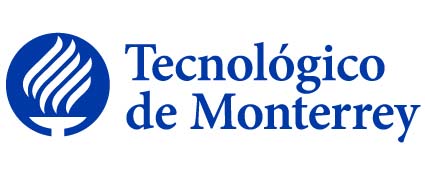
|
|||||
Disciplina asociada:Ingeniería Mecánica |
|||||
Escuela:
Ingeniería y Ciencias
|
|||||
Departamento Académico:
Mecánica y Materiales Avanzados
|
|||||
Programas académicos: |
|||||
Requisitos:(Haber Aprobado M2007 y Haber Aprobado MA2010) |
|||||
Equivalencia:M 00864 |
|||||
Intención del curso en el contexto general del plan de estudios: |
|||||
|
Este es un curso de nivel avanzado en el que se utilizan herramientas matemáticas y conceptos fundamentales de dinámica de partículas y cuerpos rígidos para establecer ecuaciones de movimiento, con la finalidad de estudiar y analizar el comportamiento dinámico vibratorio de componentes y sistemas mecánicos . El curso incluye actividades y conceptos relacionados con diseño mecánico para contextualizar el uso de las diferentes técnicas y herramientas presentadas en áreas como Ingeniería automotriz, aeronáutica y manufactura. Requiere conocimientos previos de ecuaciones diferenciales, dinámica, álgebra lineal, métodos numéricos. Como resultado del aprendizaje el alumno utiliza las herramientas y conceptos antes mencionados para modelar y analizar matemáticamente el comportamiento dinámico vibratorio de componentes y sistemas mecánicos. De igual manera, el alumno utiliza programas de simulación computacional y el equipo de laboratorio para caracterizar el comportamiento vibratorio y obtener información necesaria de la respuesta modal del sistema sometido a la acción de diversos tipos de cargas dinámicas. |
|||||
Objetivo general de la Unidad de Formación: |
|||||
| Al finalizar el curso el alumno será capaz de aplicar las herramientas matemáticas necesarias para modelar, analizar, diseñar y evaluar componentes y/o sistemas mecánicos de uno ó más grados de libertad sometidos a fenómenos vibratorios con ó sin fuerzas perturbadoras. De la misma manera, se busca que el alumno sepa preparar y conducir experimentos que permitan observar y analizar los fenómenos vibratorios de sistemas mecánicos en aplicaciones específicas en áreas como Ingeniería automotriz, aeronáutica, operaciones de manufactura, etc. | |||||
Técnica didáctica sugerida: |
|||||
| No especificado | |||||
Bibliografía sugerida: |
|||||
|
LIBROS DE TEXTO: * Rao, S. Singiresu., Mechanical vibrations , 4th ed., Upper Saddle River, N.J. : Pearson/Prentice Hall, c2004, , 0130489875 * Balakumar Balachandran and Edward B. Magrab, Vibrations, Thomson, 2004, * Vijay Varadan, K. J. Vinoy, and S. Gopalakrishnan, Smart Material Systems and MEMS: Design and Development Methodologies, Wiley, 2006, |
|||||
Perfil del Profesor: |
|||||
|
(141901)Maestría en Ingeniería Mecánica ; (143601)Maestría en Ingeniería de Manufactura ; (140803)Maestría en Ingeniería Estructural ; (141901)Doctorado en Ingeniería Mecánica ; (143601)Doctorado en Ingeniería de Manufactura ; (140803)Doctorado en Ingeniería Estructural CIP: 141901, 143601, 140803 |
|||||
|
|||||
Discipline:Mechanical Engineering |
|||||
School:
Engineering and Sciences
|
|||||
Academic Department:
Mechanics and Advanced Materials
|
|||||
Programs: |
|||||
Prerequisites:( M2007 and MA2010) |
|||||
Equivalences:M 00864 |
|||||
Course intention within the general study plan context: |
|||||
|
This is an advanced course which enables students to employ mathematical tools and the fundamental concepts of particle and rigid body dynamics in order to formulate movement equations, with the goal of studying and analyzing the dynamic vibration behavior of mechanical components and systems. The course includes activities and concepts related to mechanical design in order to contextualize the use of various techniques and tools involved in diverse areas, such as automotive engineering, aeronautics and manufacturing. Previous knowledge is required in differential equations, linear algebra and numerical methods. The learning outcome for this course is that the students employ the aforementioned tools and concepts to model and mathematically analyze the dynamic vibration behavior of mechanical components and systems. Similarly, students will use laboratory equipment to characterize vibration behavior and obtain essential information from the modal response of the system when subjected to different types of dynamic loads. |
|||||
Course objective: |
|||||
| Upon completion of this course, students will be able to apply the necessary mathematical tools to model, analyze, design and evaluate mechanical components and/or systems of one or more degrees of freedom that are subjected to vibratory phenomena with or without perturbation; prepare and conduct experiments that allow them to observe and analyze the vibratory phenomena in mechanical systems in specific applications in the areas of automotive engineering, aeronautics, manufacturing operations, etc. | |||||
Teaching and learning tecniques: |
|||||
| Not Specified | |||||
Suggested Bibliography: |
|||||
|
TEXT BOOKS: * Rao, S. Singiresu., Mechanical vibrations , 4th ed., Upper Saddle River, N.J. : Pearson/Prentice Hall, c2004, , 0130489875 * Balakumar Balachandran and Edward B. Magrab, Vibrations, Thomson, 2004, * Vijay Varadan, K. J. Vinoy, and S. Gopalakrishnan, Smart Material Systems and MEMS: Design and Development Methodologies, Wiley, 2006, |
|||||
Academic credentials required to teach the course: |
|||||
|
(141901)Master Degree in Mechanical Engineering and (143601)Master Degree in Manufacturing Engineering and (140803)Master Degree in Structural Engineering and (141901)Doctoral Degree in Mechanical Engineering and (143601)Doctoral Degree in Manufacturing Engineering and (140803)Doctoral Degree in Structural Engineering CIP: 141901, 143601, 140803 |
|||||